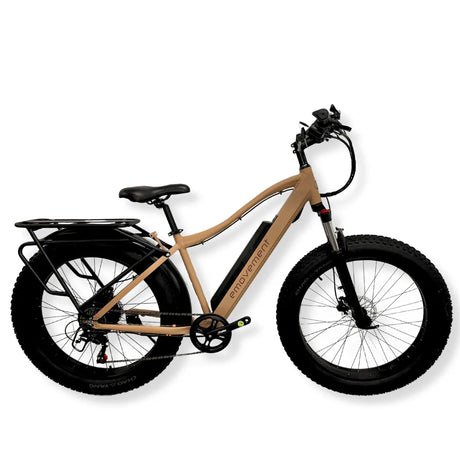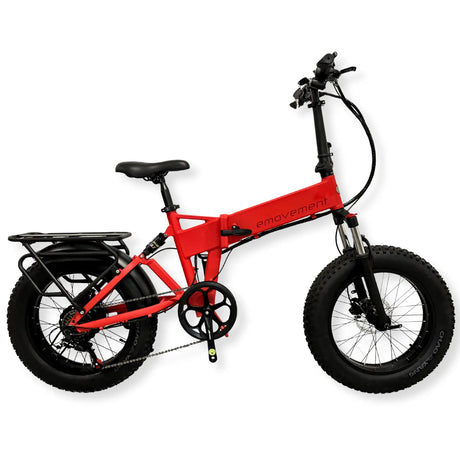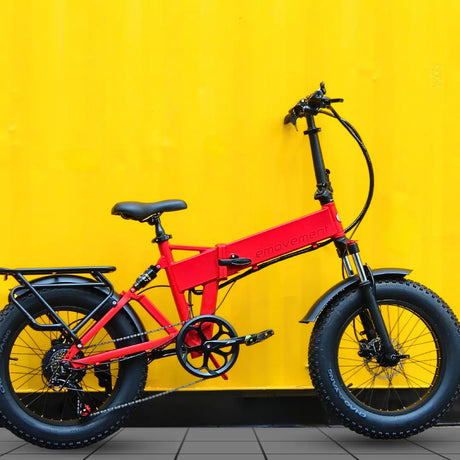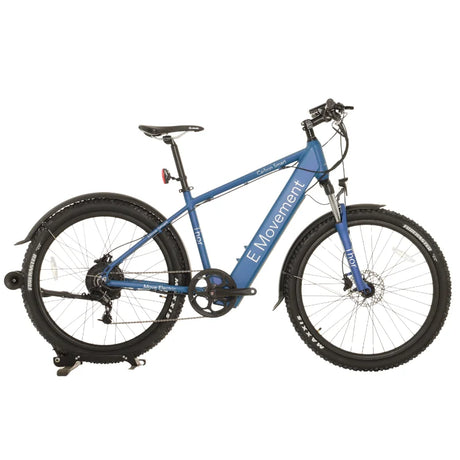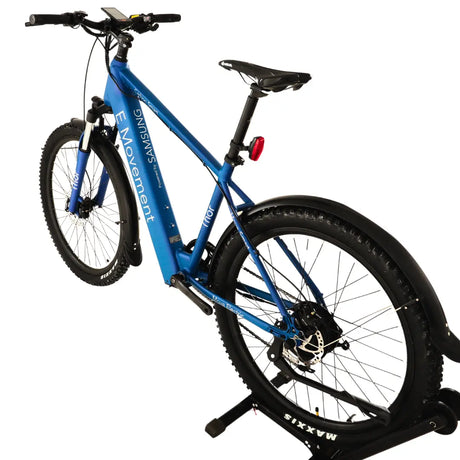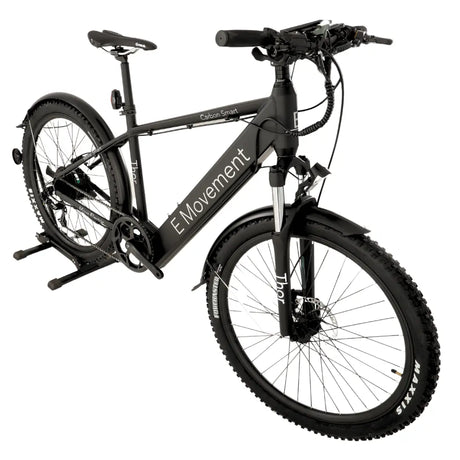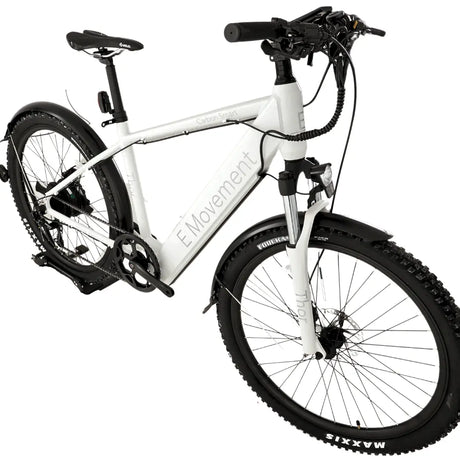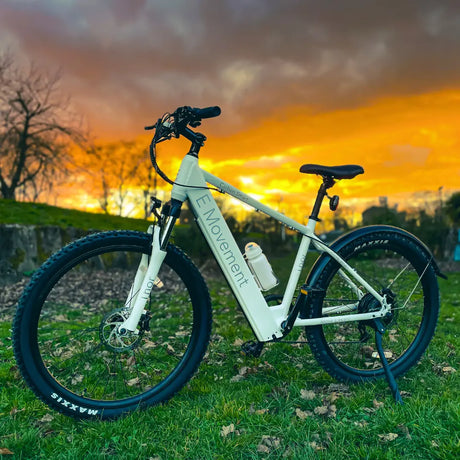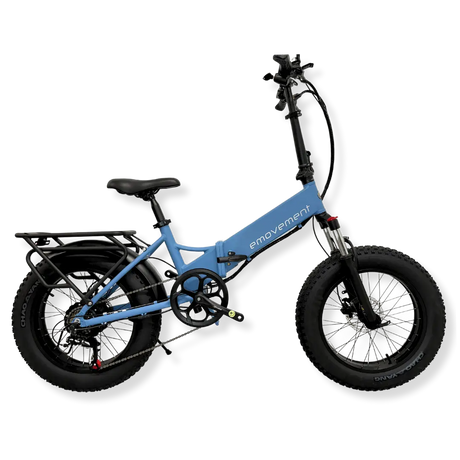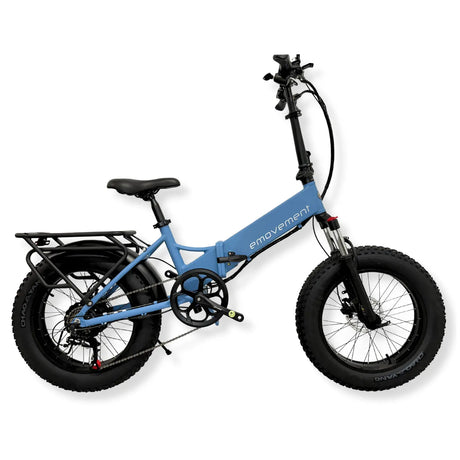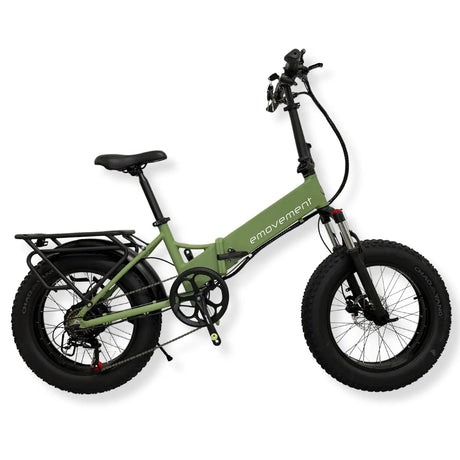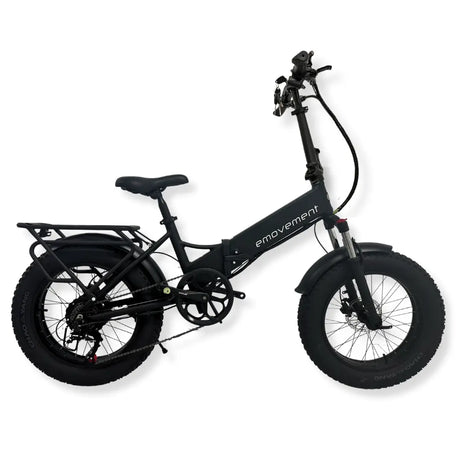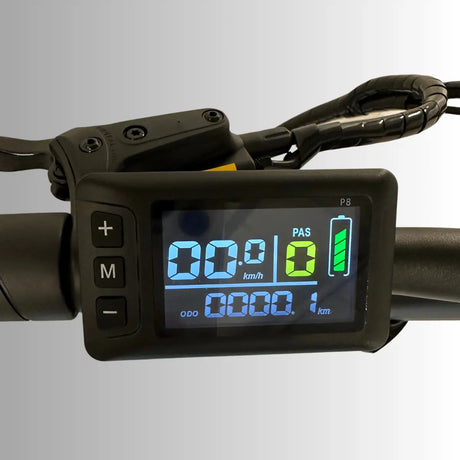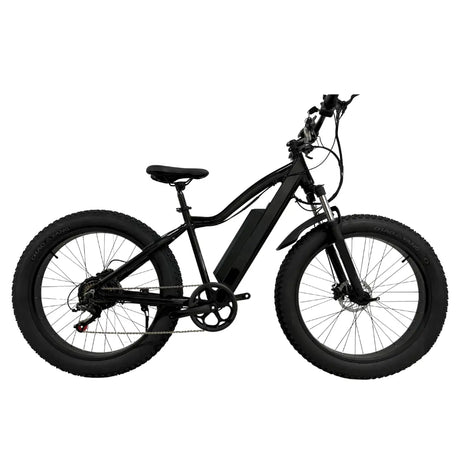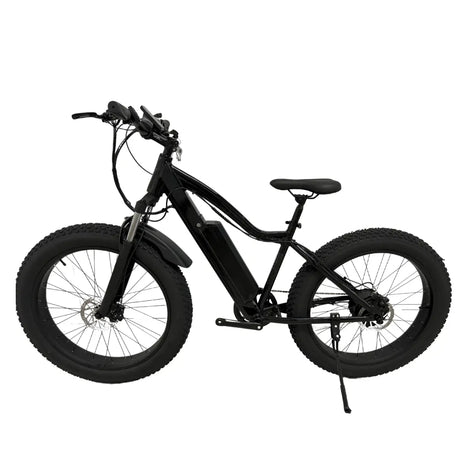Inside this Article:
- 1. What is an E-Bike Conversion Kit?
- 2. The Key Components of E-Bike Conversion Kits
- 2.1. The Motor
- 2.2. The Battery
- 2.3. The Controller
- 2.4. Throttles
- 2.5. Pedal-Assist Sensors
- 2.6. Display Units and Controls
- 3. How to Install an E-Bike Conversion Kit
- 4. Legal Considerations
- 5. Breakdown of Costs Associated with Conversion Kits
- 6. Success Stories of Bike Conversions
- 7. DIY vs. Professional Services
- Summary
- FAQs
Electric bikes have revolutionized transportation with their eco-friendly and efficient design. However, individuals hesitant to invest in a new electric model can still opt for e-bike conversion kits. These kits allow cyclists to transform their beloved standard bikes into powerful e-bicycles, blending sustainability with innovation. By repurposing existing bikes, riders can save money and reduce waste while enjoying the benefits of electric propulsion.
You can personalize your adventures to suit your needs with an electric bike conversion kit, whether it's conquering hills easily or extending their range for longer journeys. Additionally, the conversion process is accessible to riders of all skill levels, making it an inclusive and satisfying endeavour. However, note that it's not as effective as professional bike-to-ebike conversion, and we'll discuss the nuances of the topic later. Keep reading as we explore everything you need to know about an ebike conversion kit.
1. What is an E-Bike Conversion Kit?
We will first explain what an ebike conversion kit is and explore its different types that enable cyclists to upgrade their standard bicycles into powerful electric vehicles by offering enhanced speed, range, and efficiency.
1.1. The Basic Components of a Kit
An electric bike conversion kit comprises essential components such as a motor, battery, controller, throttle, and wiring harness. You integrate it with an existing bicycle to convert it into an e-bike without requiring extensive modifications or technical expertise. With an increasing demand for sustainable transportation solutions, these kits provide an accessible, affordable, and eco-friendly option for cyclists looking to electrify their rides.
1.2. Types of E-Bike Conversion Kits
Let’s now explore the range of available e-bicycle conversion kits, each catering to different riding preferences and bike configurations:
1.2.1. Front Hub Motor Kits
Front hub motor kits are popular for their simplicity and ease of installation. The motor is lodged within the front wheel hub, providing direct propulsion to the front wheel. The straightforward installation process of such kits makes them an excellent choice for urban commuting and leisurely rides around town. However, they may exhibit limited traction, particularly on slippery surfaces, and are best suited for flat terrain. We personally recommend rear hub motor kits.
1.2.2. Rear Hub Motor Kits
This type of conversion kit offers enhanced traction and performance by powering the rear wheel directly. The rear hub motor configuration is favoured for its stability and power delivery, making it suitable for various terrains and riding conditions . While installation may be slightly more complex compared to front hub motor kits, the improved handling and traction of these kits make them a popular choice. If you’re an e-bike enthusiast seeking a reliable and versatile conversion solution, rear hub motor kits are the way to go.
1.2.3. Mid-Drive Conversion Kits
Mid-drive conversion kits feature a motor integrated into the bike's bottom bracket, directly driving the crankshaft. This setup offers superior torque and efficiency, which is ideal for tackling steep hills and challenging terrain with ease. Note that you can not install mid-drive conversion kits at home as they require professional installation. Their compatibility is also limited to certain bike frames, but the kit provides the best weight distribution and stability.
2. The Key Components of E-Bike Conversion Kits
Unlocking the potential of standard bicycles, electric bike conversion kits are the gateway to electrifying your ride. Here are some core components that make these conversions possible:
2.1. The Motor
At the heart of every conversion lies the motor, determining the power, efficiency, and overall performance of your electric ride.
As discussed in the previous section, you can choose between a front hub motor, a rear hub motor, and a mid-drive motor
2.2. The Battery
The battery is a critical component of e-bicycle conversion kits that provides the energy required to propel your ride forward.
Conversion kits usually incorporate Lithium-ion batteries because of their high energy density and lightweight design that give excellent performance and range. These batteries provide consistent power delivery and long-lasting reliability, ensuring a smooth and reliable ride. Lithium-ion Phosphate Batteries can also be used; these are known for their longevity and safety features and batteries are preferred for long-term use. They are more resistant to overheating and overcharging and provide peace of mind during extended rides.
2.3. The Controller
A quality controller plays a pivotal role in e-bike conversion kits for proper functionality and seamless performance.
The controller serves as the brain of the electric bike, regulating power delivery from the battery to the motor. It determines the speed, torque, and overall performance of the bike to guarantee a smooth and efficient ride. Without the controller, the electric components of the bike would not function properly.
Several key features indicate its quality and performance, power ratings, lifespan and thermal management. Some controllers offer programmable settings, allowing you to customize performance parameters such as speed limits and acceleration curves.
2.4. Throttles
Although not essential, there are certain supplementary components that elevate the functionality and user experience of electric bike conversion kits:
Throttles offer riders intuitive control over the motor's power output, enabling precise acceleration and deceleration at the touch of a button or twist of a grip. Whether opting for thumb throttles, twist grips, or thumb-activated triggers, these components provide riders with effortless command over their electric propulsion. Since throttles incorporate ergonomic designs and responsive feedback, you can enjoy a seamless transition between human-powered and electric-assisted modes on any terrain.
2.5. Pedal-Assist Sensors
Pedal-assist sensors integrate human power with electric assistance. They intelligently adjust the motor’s output by detecting pedal cadence and force to provide a natural and responsive riding experience. They let you seamlessly cruise along flats and tackle steep inclines, With their sophisticated algorithms and real-time feedback, riders can enhance efficiency and extend battery life for longer journeys.
2.6. Display Units and Controls
Display units and controls offer riders essential information and an intuitive interface for adjusting settings. Not only do these components help monitor battery levels and speed, but they also select assist modes and adjust settings on the fly. This way, e-bike users can stay informed and in control throughout their electric journeys.
3. How to Install an E-Bike Conversion Kit
Installing a conversion kit is a straightforward process that can breathe new life into your standard bicycle. Here's a step-by-step guide on how to fit an e-bike conversion kit to your bike:
- Preparation : Start by gathering all the necessary tools and equipment required for the installation, like wrenches, screwdrivers, and any specialized tools provided with the kit. Ensure that your bike is clean and in good condition before beginning the installation process.
Although the tools you need me, here is a general list for hub conversion kits:
- Allen wrenches (Hex Keys)
- Wrench set - Adjustable wrenches or a set of open-end wrenches (often metric) for various nuts and bolts
- Screwdrivers - Both flathead and Phillips head screwdrivers
- Cable cutters
- Torque wrench
- Chain breaker to shorten your bike’s chain.
- Tyre levers to remove and reinstall the tire if your kit includes wheel hub motors.
- Spoke wrench to adjust the tension in the spokes after installing a hub motor
- Bottom bracket tools if your conversion kit involves changes to the bottom bracket.
- Multimeter to check electrical connections and ensure components are functioning properly.
- Remove Existing Components: Detach any components from your bike that may interfere with the installation of the conversion kit. These include the rear wheel, bottom bracket, and derailleur. Follow the manufacturer's instructions carefully to avoid damaging any parts during removal.
- Install Motor and Battery: Next, install the motor and battery components of the conversion kit according to the manufacturer's instructions. Typically, this involves attaching the motor to the front or rear wheel hub and mounting the battery securely to the frame or rack of the bike.
- Connect Electrical Components: Once the motor and battery are in place, connect the electrical components of the conversion kit, such as the wiring harness, controller, throttle, and pedal-assist sensors. Make sure that all connections are secure and properly insulated to prevent electrical issues later on.
- Test and Adjust: After completing the installation, test the functionality of the conversion kit by turning on the power and engaging the throttle or pedal-assist system. Check for any unusual noises, vibrations, or malfunctions and make any necessary adjustments to guarantee smooth operation.
- Finalize Installation: When you're satisfied with the kit’s performance, finalize the installation by securing all components in place with the provided hardware. Double-check that everything is properly tightened and aligned before taking your newly converted e-bike for a test ride.
4. Legal Considerations
You must know the legal and safety landscape of electric biking before you shift. We have an in-depth article about the UK’s legal landscape for e-bikes here .
In general, your electric bike motor must not exceed 250W in the UK, otherwise, you’ll have to license, tax, and insure it like a moped. Use of throttle is prohibited on public property as well
5. Breakdown of Costs Associated with Conversion Kits
Understanding the financial aspects of conversion kits is essential for those considering electrifying their bikes. Let's dissect the various costs involved in converting a standard bicycle into an electric one.
6.1.2. Comparative Analysis Before and After Conversion
You can obtain a comprehensive understanding of how cost-effective conversion kits are by comparing the expenses before and after converting a standard bicycle into an electric one:
- Upfront Costs: Riders need to assess the initial investment required for purchasing a conversion kit before conversion, along with any additional tools or accessories needed for installation. Comparing this with the cost of purchasing a new electric bike allows for an informed decision based on budget and preferences. Typically, conversion kits in the UK range from £200 to £800, while factory-built electric bikes can cost between £1,000 to £5,000.
- Long-Term Savings: After conversion, riders can evaluate the ongoing savings achieved through reduced fuel costs, maintenance expenses, and potential health benefits. This helps determine the return on investment and overall cost-effectiveness of electrifying your bike. Over a five-year period, riders in the UK can potentially save £500 to £1,000 by converting their standard bicycle into an electric one using a conversion kit.
6. Success Stories of Bike Conversions
Riders have reported:
- Increased Accessibility: Many users highlight how e-bike conversion kits have made cycling more accessible and enjoyable for them. By adding electric assistance to their bikes, riders can conquer hills, cover longer distances, and arrive at their destinations feeling refreshed and energized.
- Customization Options: Users appreciate the ability to customize their electric bikes according to their specific needs and preferences. Whether fine-tuning power settings, upgrading components, or adding accessories, conversion kits offer flexibility and control over the riding experience.
- Cost-Effectiveness: Several cyclists emphasize the cost-effectiveness of converting their existing bikes to electric rather than purchasing a new electric bike. Leveraging conversion kits has enabled them to enjoy the benefits of electric biking without breaking the bank. This makes it an accessible option for budget-conscious riders.
7. DIY vs. Professional Services
When it comes to electrifying your bike, you have the choice between a do-it-yourself approach using conversion kits or opting for professional e-bike conversion services. Each option comes with its own set of advantages and considerations, catering to different preferences and needs.
7.1. Pros and Cons of DIY Conversion Kits
DIY conversion kits offer several benefits:
- Cost-Effectiveness: DIY kits are typically more affordable than purchasing a new electric bike, making them a budget-friendly option.
- Customization: With a DIY kit, you have the flexibility to customize your existing bike according to your preferences, from choosing the motor type to selecting the battery size.
- DIY Installation : Many conversion kits come with detailed instructions, which allows mechanically inclined individuals to install them at home with basic tools.
However, DIY conversion kits also have some drawbacks, mainly in their crudeness:
- Installation Complexity: Installing a conversion kit requires mechanical skills and may be challenging for those unfamiliar with bike maintenance.
- Compatibility Issues: Ensuring compatibility between the kit and your bike's frame, components, and wiring can be tricky. This can lead to potential compatibility issues.
- Limited Support: DIY kits may not come with comprehensive support or warranties, leaving you to troubleshoot any issues on your own. If problems arise, the lack of support may result in additional costs or frustration.
7.2. Benefits of Professional E-Bike Conversion Services
Here are some reasons why a professional e-bike conversion service is a good option:
- Expertise: Professional technicians have the knowledge and experience to ensure proper installation and integration of the conversion components.
- Warranty and Support: These services often provide warranties and ongoing support, giving you peace of mind and assistance in case of any issues. Additionally, they may offer troubleshooting services and repairs to minimize downtime
- Tailored Solutions: A professional can recommend the best components and configurations based on your riding needs and preferences for a customized solution.
- Comprehensive Service: Beyond installation, professional services may include maintenance, upgrades, and adjustments that optimize your electric bike for performance and longevity.
Summary
E-bike conversion kits offer a compelling opportunity to transform standard bicycles into electric ones, providing increased accessibility, customization options, and cost-effectiveness. However, it's essential to weigh considerations such as upfront costs, maintenance requirements, and regulatory concerns before deciding if a conversion kit is right for you. By conducting thorough research and considering your individual preferences and riding goals, you can make an informed decision and embark on electrifying adventures with confidence.
Still, keep in mind that while these conversion kits do the job, they’re not effective in the long run. It can be a crude way to convert your bike, especially if you don’t know what you’re doing. That’s why, at E-Movement, we offer professional e-bike conversion services to make sure the conversion process is seamless and stress-free for all our customers!
FAQs
1. What is the average cost of an e-bike conversion kit?
The average cost of an e-bike conversion kit typically ranges from £200 to £800 in the UK, depending on the brand, quality, and features included.
2. How long does it take to install a conversion kit?
The installation time for a conversion kit can vary depending on the complexity of the kit and the skill level of the installer. On average, it may take between 2 to 6 hours to install a conversion kit properly.
3. Can any bike be converted to an e-bike?
Generally, almost any standard bicycle can be converted to an electric bike using a conversion kit, as long as it meets the compatibility requirements specified by the kit manufacturer.
4. Are there any warranties on conversion kits?
Many conversion kit manufacturers offer warranties on their products, lasting from 6 months to several years. It's essential to check the warranty terms and conditions provided by the manufacturer before purchasing a conversion kit.




